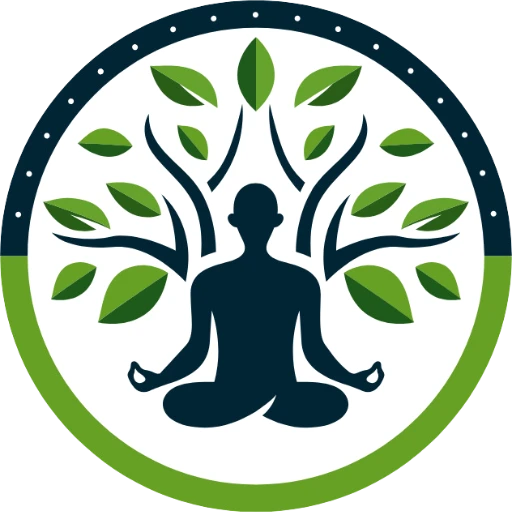Welcome to your Life Assessment Blueprint!
This guide will help you create a clear picture of where you stand in life’s most important areas.
Think of it as drawing up the architectural plans for your personal growth – we need to understand the current structure before we can build something better.
Just as a blueprint helps architects plan a beautiful building, this assessment process will help you:
- Create a foundation for meaningful personal growth
- Map out the key areas of your life that matter most to you
- Measure your current satisfaction in each area
- Identify which areas need the most attention
This assessment is the first phase of our Inner Growth Journey framework, which includes:
- Assessing (this article)
- Aspiring
- Strategizing
- Doing & Reviewing
With this blueprint in hand, you’ll move from feeling uncertain about your direction to having a clear understanding of where you are and where you want to go.
Let’s start mapping out your path to growth!
1. Identify Your Important Life Areas

To begin your inner growth journey, start by understanding the different areas of your life that contribute to your well-being. Here’s how to brainstorm your important life areas:
1. Grab a Notebook
Find a quiet spot and grab a pen and paper (or open a digital note). Don’t worry about perfect organization at this point – focus on letting ideas flow freely.
2. Brainstorm
Think about all aspects of your life: work, health, relationships, hobbies, spirituality, finances, anything that feels important.
- What are the most important areas of your life?
- How would you categorize the different aspects that contribute to your happiness and well-being?
- Are there parts of your life where you feel a sense of lack or imbalance?
- Are there areas that you consistently daydream about improving or achieving?
Write down everything that comes to mind, big or small.
3. Aim for 5-7 Areas
After a good brainstorm session, review your list. See if you can narrow it down to 5-7 core areas that feel most essential to your well-being and overall goals.
Common Life Areas for Inspiration
If you’re unsure where to start, here are some common areas for consideration:
- Career: Satisfaction and achievements in your professional life.
- Health: Physical well-being, mental health, and emotional balance.
- Relationships: The depth and quality of your connections with others.
- Learning: Growth in knowledge, skills, and emotional intelligence.
- Finance: Your financial security and management of economic resources.
- Leisure: How you rest, recharge, and enjoy life outside of work.
- Spiritual / Faith: Exploration and practice of your beliefs, providing purpose, comfort, and guidance in life.
Remember there’s no right or wrong answer.
The goal is to discover what truly lights you up and what you want to focus on in your growth journey.
2. Reflect and Assess Your Life Areas

You’ve identified what’s important to you. Now, take a few moments to reflect on each area. Consider these questions:
- Joy and Satisfaction: What aspects of this area bring you the most fulfillment?
- Areas for Growth: Where does this area feel lacking or unbalanced?
- Values Alignment: Are your core values reflected in how you approach this area?
- Desired Improvement: What kind of growth or positive change do you envision?
- Ideal Vision: How does this area contribute to your overall ideal life?
Capture your initial thoughts. These insights will guide your prioritization in the next step.
With a clearer understanding of your life areas, let’s prioritize and score them to determine where to focus your growth efforts.
3. Prioritize and Score Your Life Areas

Now, let’s focus on where to direct your growth efforts.
Prioritizing your life areas ensures focused progress and meaningful change.
Remember, your priorities may shift over time – embrace that flexibility!
Prioritization Methods
Choose the method that feels best for you:
- Ranking:
- List your life areas.
- Start with the MOST important area at the top, and work your way down to the least important at this moment.
- Must, Should, Could – Divide your life areas into these categories:
- Must: Areas needing immediate attention or focus.
- Should: Areas that are important but less urgent.
- Could: Areas you’d like to develop in the future.
- Values-Alignment:
- List your most important values.
- Consider how well each life area supports those values and rank them accordingly.
Now that you’ve explored different ways to prioritize, here are some questions to refine your choices even further:
- Urgency and Importance: Which areas of my life require immediate attention to prevent problems or achieve critical goals?
- Long-Term Impact: Investing time and effort in this area will have the biggest positive impact on my overall life in the future.
- Gut Feeling: If I had unlimited resources, which area would I feel most excited to develop right now?
- Obstacles and Ease: Which areas feel consistently difficult? Which seem to flow more naturally?
- Energy Drain vs. Boost: Where do I tend to lose energy, and where do I feel energized after investing time?
- Connection to Values: Does neglecting any area create a sense of conflict with my core values?
- The “Regret” Test: If I don’t focus on this area now, will I likely regret it in a year or five years?
Now that you’ve prioritized your areas, let’s add another layer of insight by scoring each one based on your current state.
Quantifying Your Life Areas (For Progress Tracking)
Get a clearer picture of where you stand in each important area by assigning numerical scores.
This provides a baseline you can compare against over time to measure your growth!
Instructions:
- Choose a Scale: Use 1-5 or 1-10, where 1 represents low satisfaction and the higher number represents high satisfaction.
- Rate Each Area: Be honest with yourself – how fulfilled do you currently feel in each life area? Assign a score.
- No Judgement: This isn’t about good or bad, but about creating a starting point for your journey.
Why this Matters:
- Objective Baseline: Numbers provide a less subjective measure than words alone.
- Tracking Progress: By re-scoring at regular intervals (eg. every 6 months or yearly), you’ll see tangible evidence of your growth.
- Staying Motivated: Seeing improvement in your scores can be incredibly motivating!
Don’t judge yourself during this process!
This is about gaining honest insight for positive growth.
With a clearer picture of your priorities and current satisfaction levels, you’re well-equipped to start shaping your ideal future.
Assessment Complete: Your Roadmap to Growth Begins!

Take a moment to celebrate! You’ve invested in yourself, gaining valuable insights:
- Clarity: You’ve defined your important life areas, setting a clear direction for your growth.
- Awareness: Through reflection and scoring, you have a stronger understanding of your current state in each area.
- Prioritization: You’ve identified which areas to focus on for the greatest impact on your well-being.
- Empowerment: You’re no longer just reacting to life – you have the tools to intentionally shape your future!
Ready for What’s Next?
The Aspiring stage of our Inner Growth framework is all about envisioning your ideal future.
With your assessment results in hand, you’re ready to set inspiring goals and chart a fulfilling path forward.
Head to the Aspiring stage to continue.



